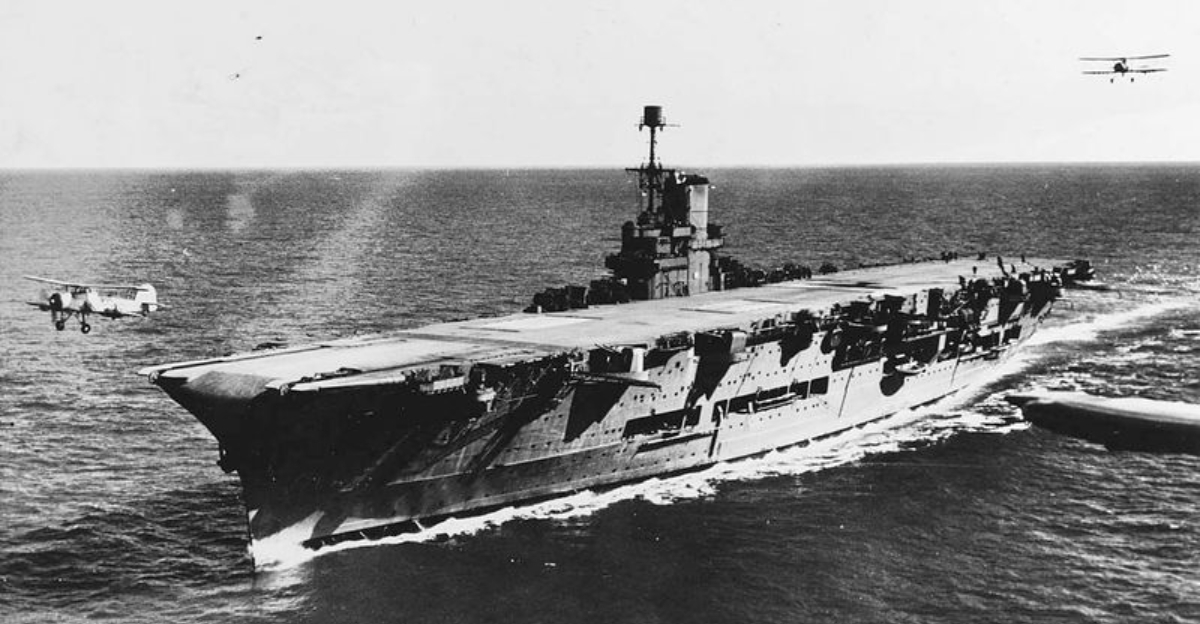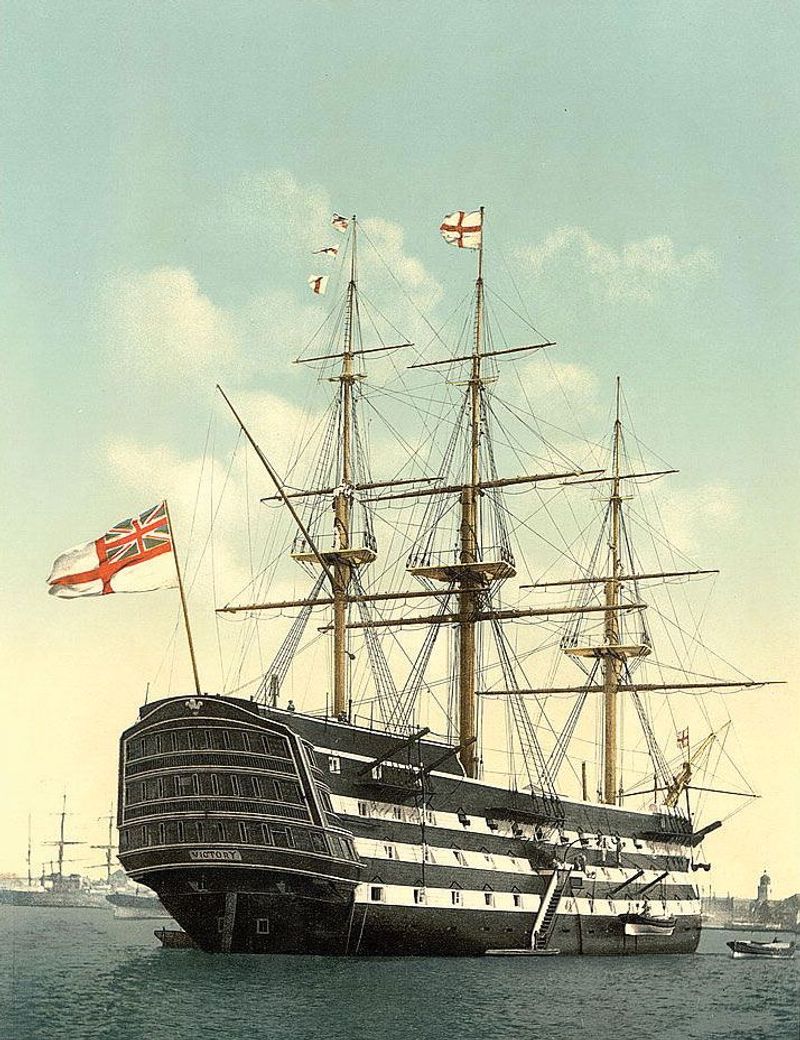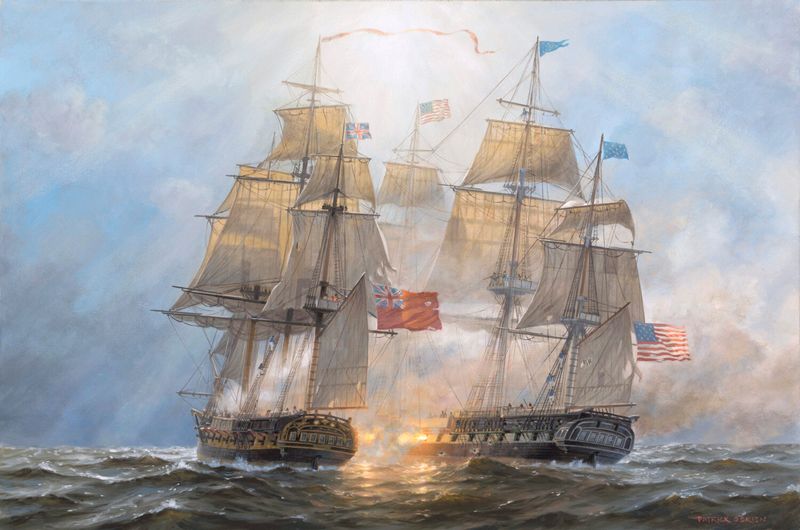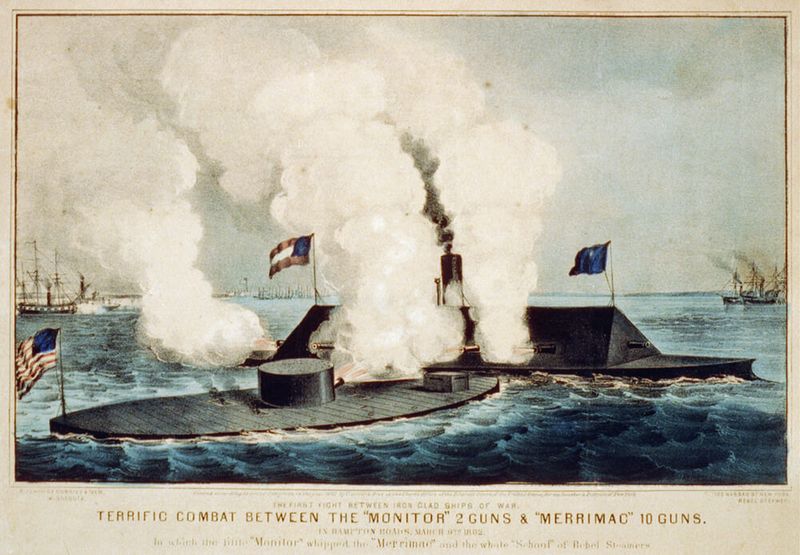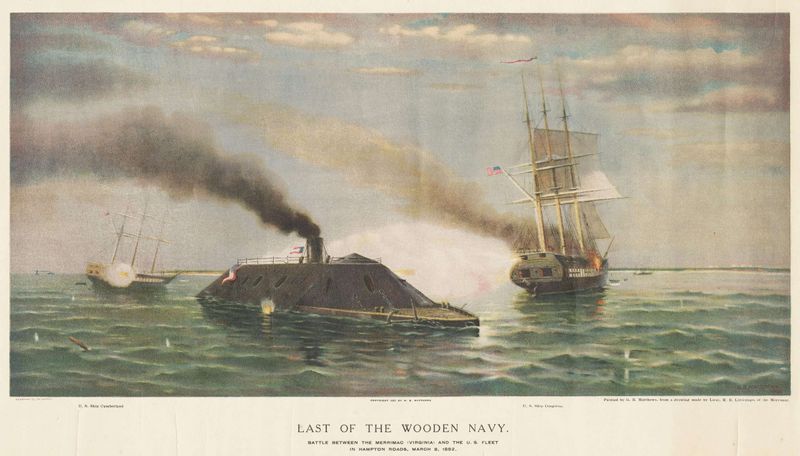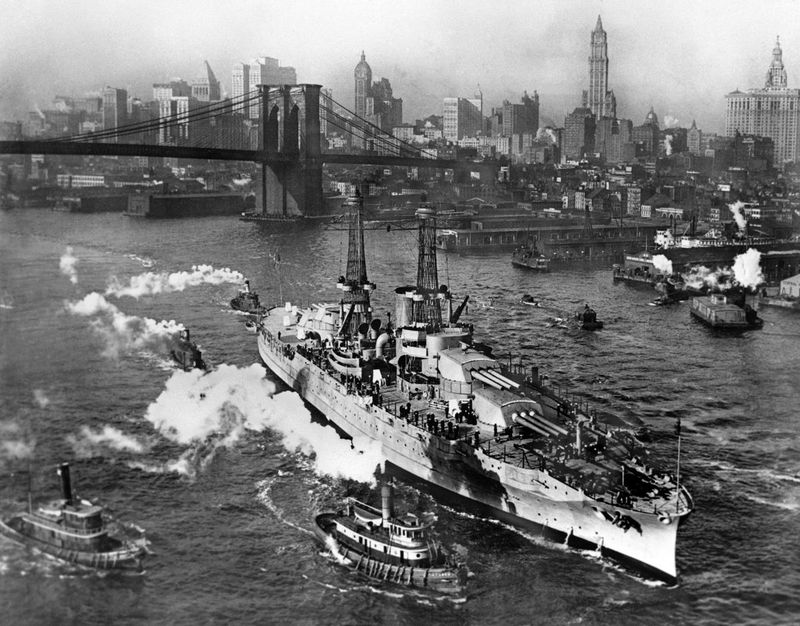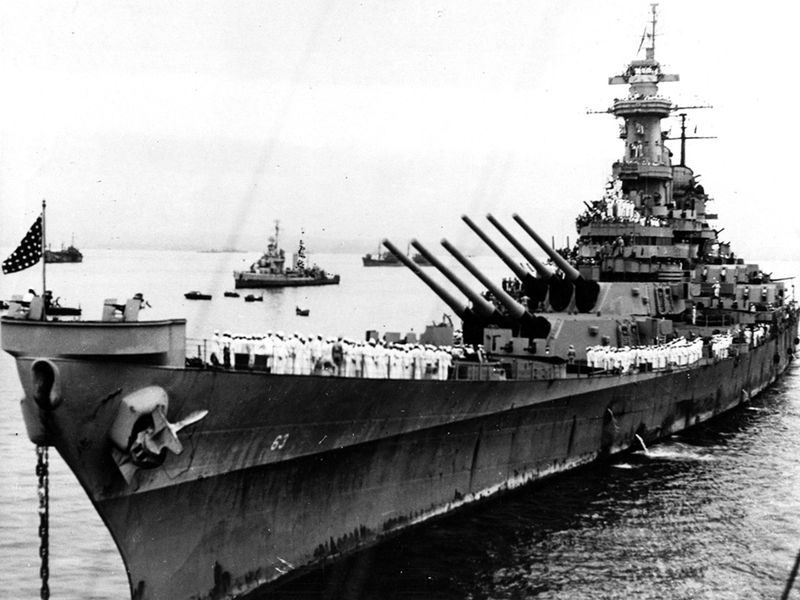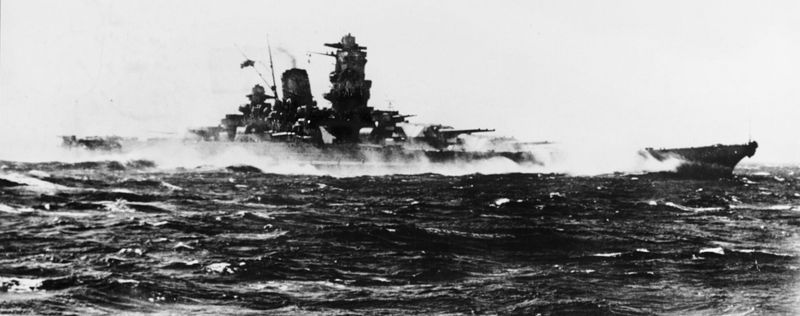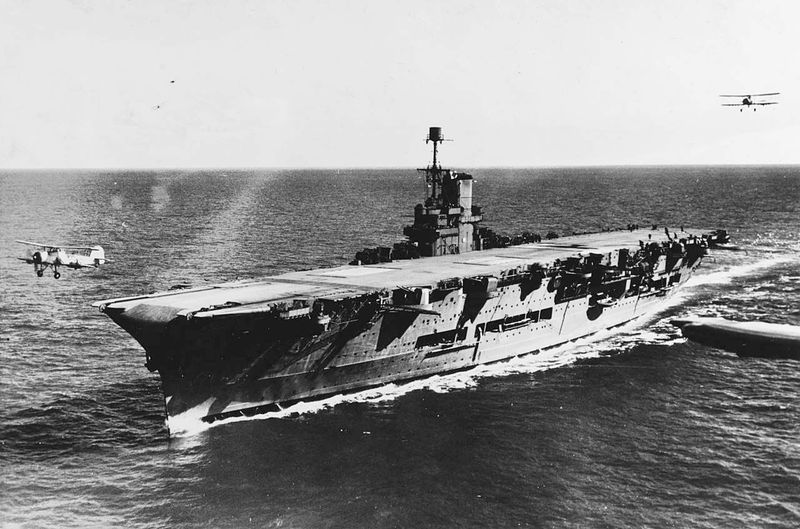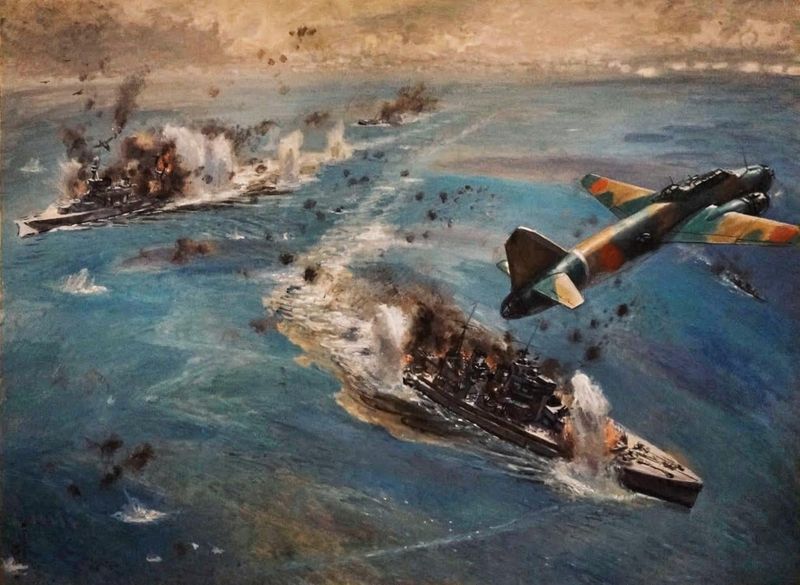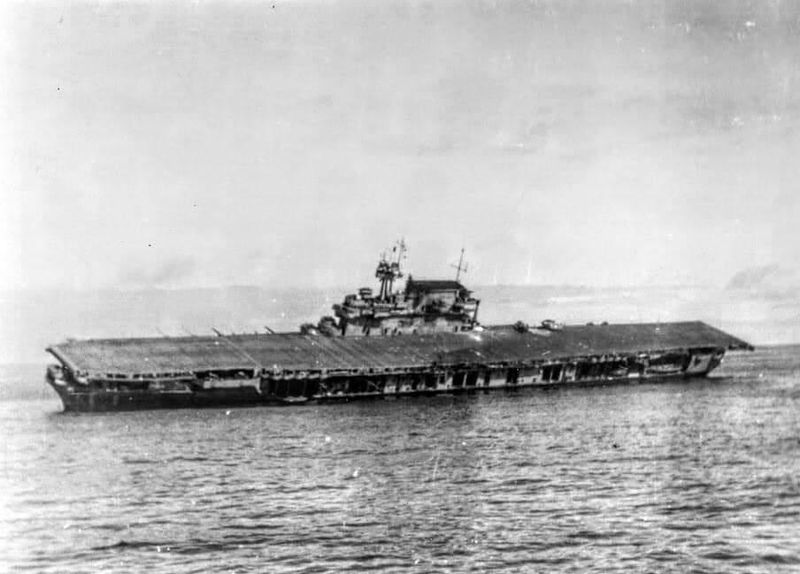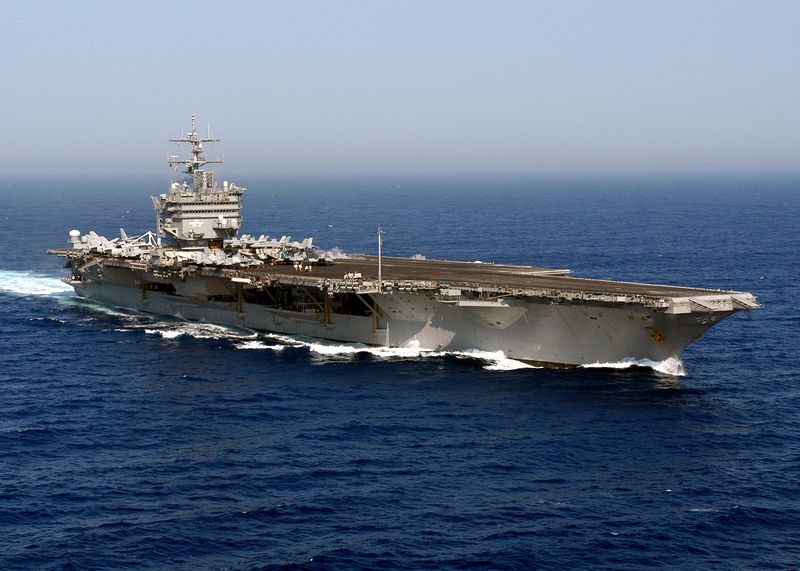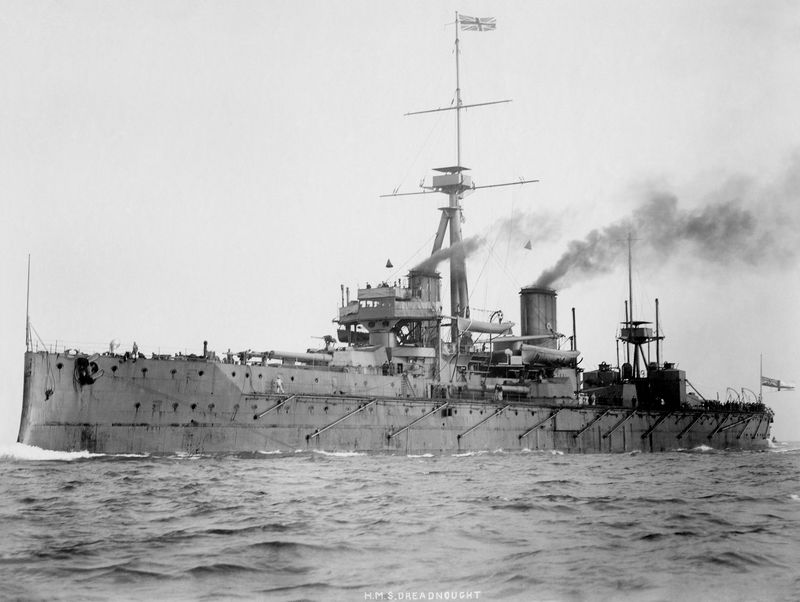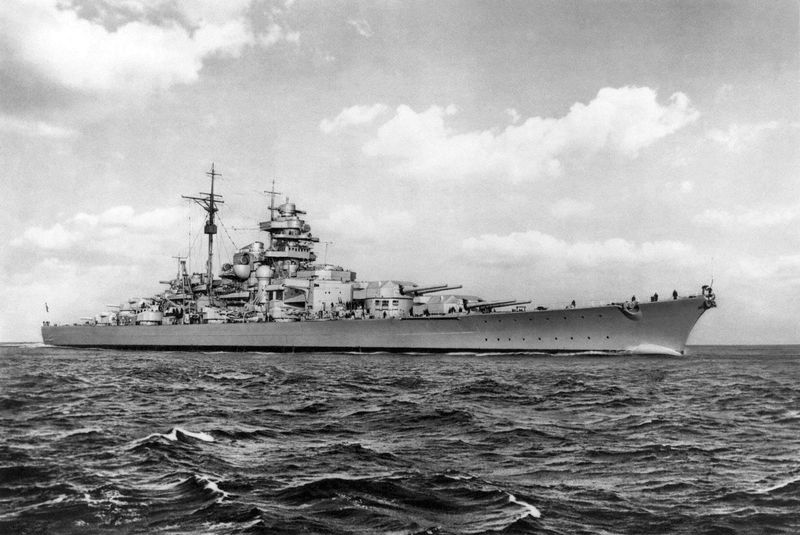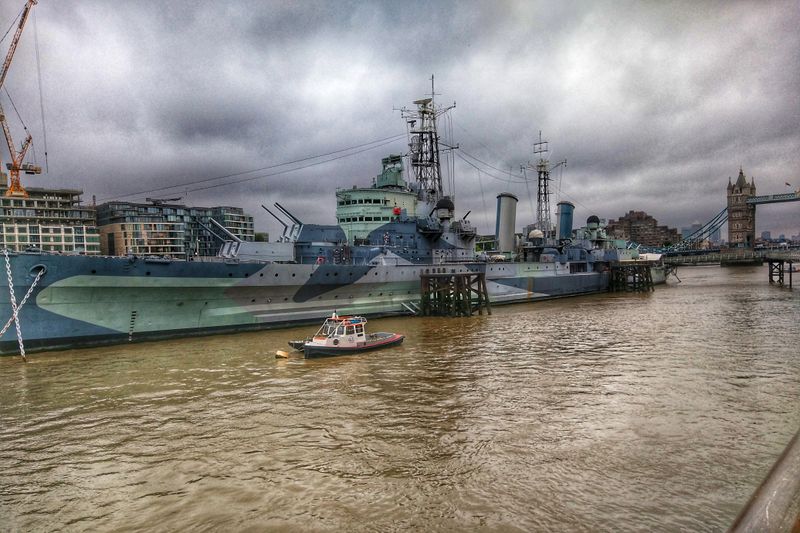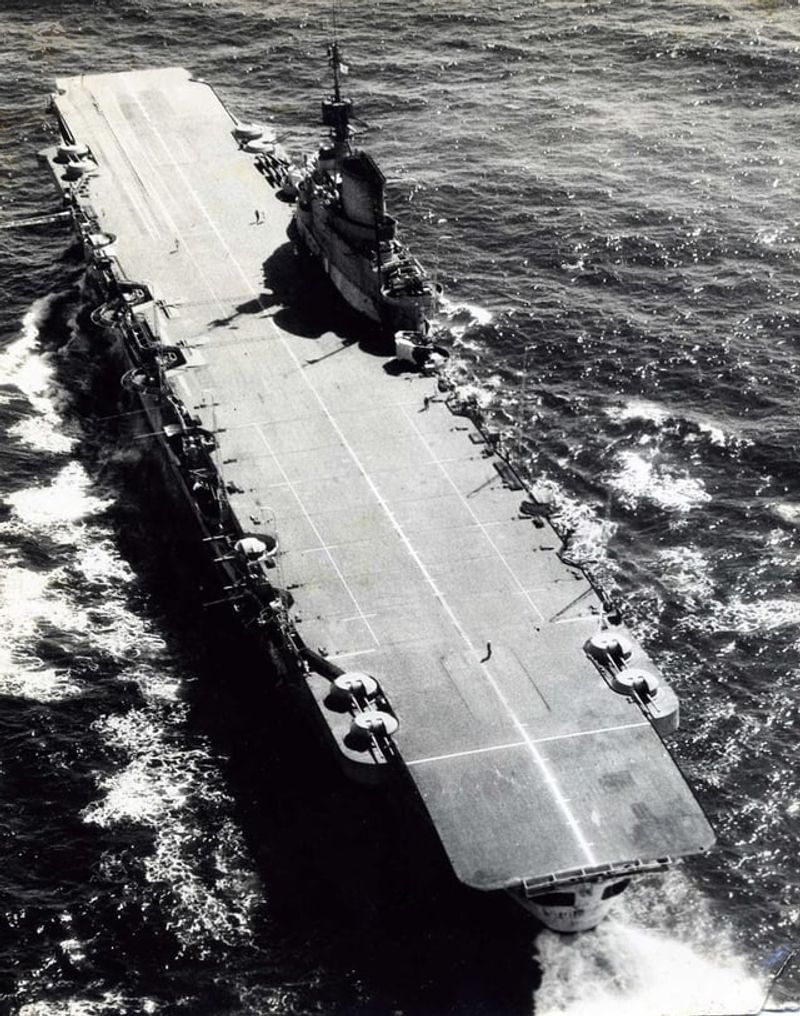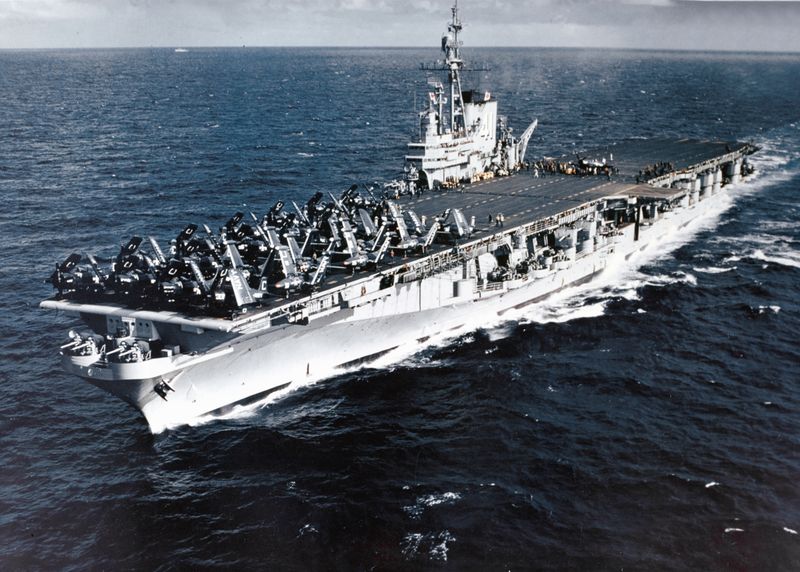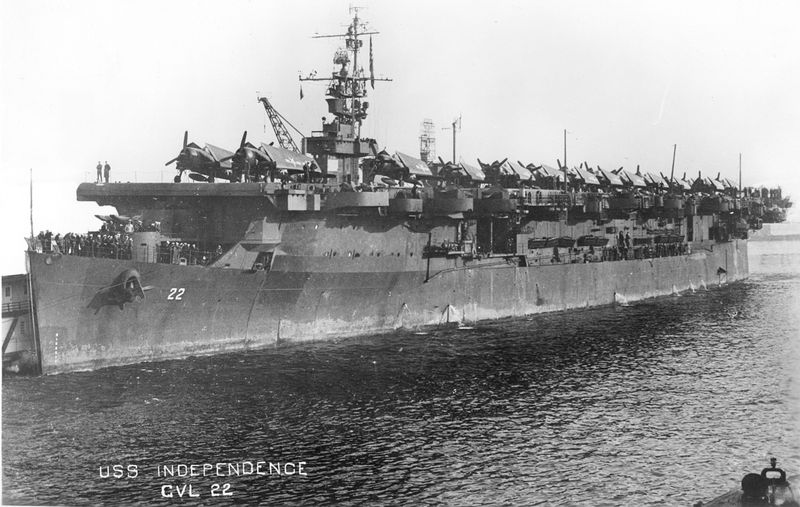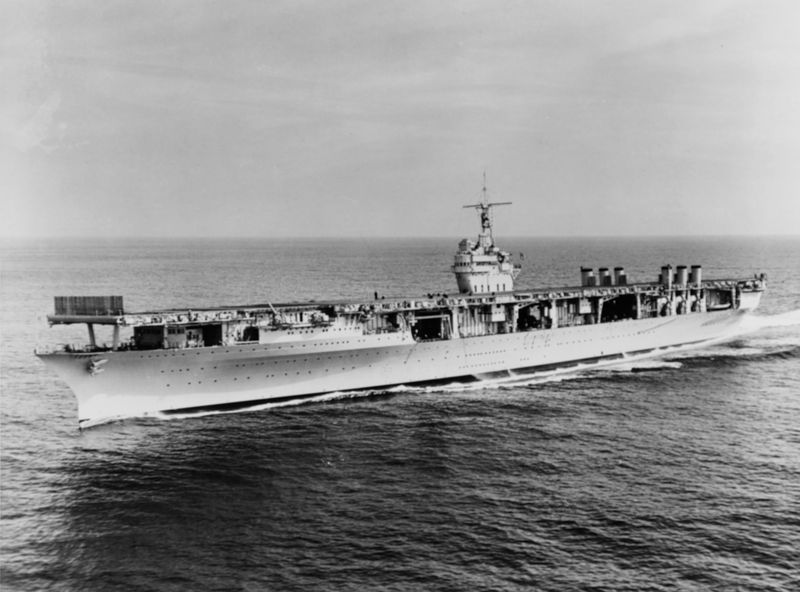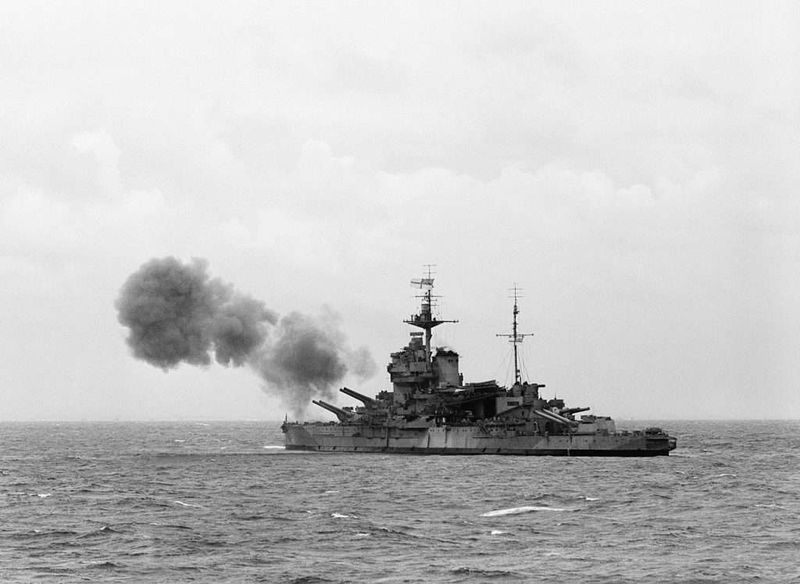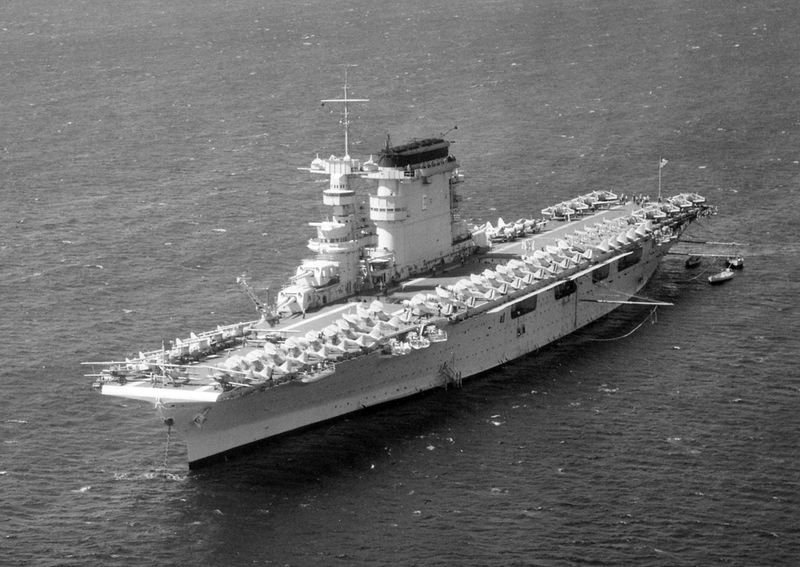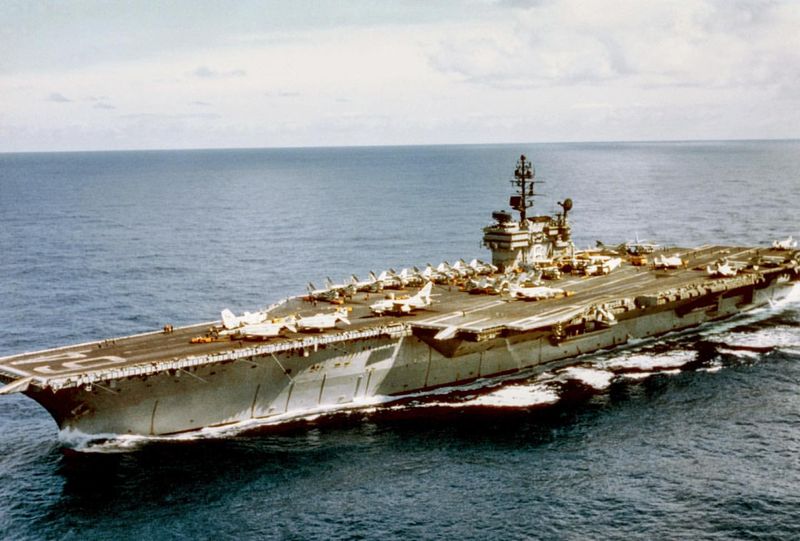The Battles That Turned These 25 Warships Into Legends
Throughout maritime history, certain warships have etched their names in the annals of legend. These vessels, through their iconic battles and storied service, have become symbols of naval prowess and strategic brilliance.
From the age of sail to the era of nuclear power, the tales of these ships continue to inspire awe and admiration.
In this article, we explore 25 of the most famous warships that have left an indelible mark on history through their legendary battles.
1. HMS Victory – Trafalgar (1805)
HMS Victory is best known for its role as Admiral Nelson’s flagship at the Battle of Trafalgar in 1805. This monumental battle saw the British Royal Navy pitted against the combined fleets of France and Spain.
Amidst thunderous cannonades, Victory led the charge and played a pivotal role in securing a decisive victory for Britain.
Nelson’s tactics at Trafalgar forever changed naval warfare, emphasizing the importance of aggressive engagement and breaking the enemy’s line.
Today, HMS Victory remains a symbol of British naval heritage, preserved at Portsmouth Historic Dockyard as a testament to its storied past.
2. USS Constitution (“Old Ironsides”) – War of 1812, engagement with HMS Guerriere
Nicknamed “Old Ironsides,” the USS Constitution is famed for its resilience in battle, particularly during the War of 1812 against HMS Guerriere. Its oak hull was so tough that enemy cannonballs seemed to bounce off, earning it the legendary moniker.
The ship’s triumph over Guerriere marked a significant morale boost for the fledgling United States Navy, establishing its reputation on the global stage.
The Constitution’s storied history is preserved as the world’s oldest commissioned warship still afloat, currently stationed at Boston Navy Yard, where it continues to inspire visitors with its legacy.
3. USS Monitor – Battle of Hampton Roads (1862)
The USS Monitor revolutionized naval warfare with its innovative design, featuring a rotating turret. This ironclad warship famously clashed with the CSS Virginia at the Battle of Hampton Roads in 1862, marking the first meeting in combat of ironclad warships.
The battle itself ended in a stalemate, but the Monitor’s technological advancements left a profound impact on naval engineering. Its design influenced future warships and marked the dawn of a new era in naval combat.
Today, remnants of the Monitor can be explored at the Mariners’ Museum in Newport News, offering insights into its groundbreaking history.
4. CSS Virginia (Merrimack) – Battle of Hampton Roads (1862)
The CSS Virginia, originally the scuttled USS Merrimack, became an iconic ironclad in the Confederate Navy. It was central to the Battle of Hampton Roads in 1862, where it engaged the USS Monitor in a historic clash of ironclad ships.
While the battle ended without a clear victor, the Virginia’s formidable design proved the obsolescence of wooden warships. Its role in the battle marked a turning point in naval architecture, influencing shipbuilding for generations.
The legacy of the CSS Virginia endures as a symbol of innovation and Southern ingenuity during the American Civil War.
5. HMS Hood – Battle of the Denmark Strait (1941)
HMS Hood, the pride of the Royal Navy, met its fate during the Battle of the Denmark Strait in 1941. Tasked with intercepting the German battleship Bismarck, Hood engaged in a fierce confrontation that would tragically end in its sinking.
A catastrophic explosion tore through Hood, sinking it within minutes and taking over 1,400 crew members with it. The loss of Hood was a profound shock to Britain, spurring a relentless pursuit of the Bismarck.
Though the ship is now a wreck, its legacy endures as a poignant reminder of the perils of naval warfare.
6. USS Enterprise (CV-6) – Battle of Midway (1942)
USS Enterprise, known as the “Big E,” played a crucial role in the Pacific theater of World War II. Its most notable engagement was the Battle of Midway in 1942, where it helped turn the tide against Japanese forces.
Enterprise launched air strikes that were instrumental in sinking four Japanese aircraft carriers, crippling the enemy fleet. Its contributions were pivotal in shifting momentum in favor of the Allies.
Throughout WWII, the “Big E” became one of the most decorated ships in U.S. history, serving with distinction in numerous battles across the Pacific.
7. USS Hornet (CV-8) – Doolittle Raid & Battle of Midway (1942)
USS Hornet played a dual role in two significant WWII events: the Doolittle Raid and the Battle of Midway. In April 1942, Hornet launched the legendary Doolittle Raid, striking the Japanese mainland and delivering a psychological blow.
Later that year, during the Battle of Midway, Hornet’s aircraft were key in the decisive engagement that marked a turning point in the Pacific War.
These operations showcased the strategic importance of aircraft carriers in modern warfare and solidified Hornet’s place in naval history as a symbol of American resilience and ingenuity.
8. USS Arizona – Attack on Pearl Harbor (1941)
The USS Arizona is eternally linked to the attack on Pearl Harbor on December 7, 1941. As Japanese aircraft launched a surprise assault, Arizona suffered catastrophic damage from a bomb that detonated its forward magazines.
The explosion resulted in the ship’s sinking and the loss of 1,177 crew members. The attack led the United States to formally enter World War II.
Today, the USS Arizona Memorial stands above the sunken battleship, honoring those who perished and serving as a solemn reminder of the cost of war and the resilience of the human spirit.
9. USS Missouri (BB-63) – Site of the Japanese surrender (1945)
USS Missouri, a mighty battleship in the U.S. Navy, holds a unique place in history as the site of Japan’s formal surrender on September 2, 1945. This event, held aboard “Mighty Mo” in Tokyo Bay, marked the official end of World War II.
The solemn ceremony was attended by representatives from Allied nations, symbolizing a new era of peace. Missouri’s legacy extends beyond this moment, having served in Korea and the Gulf War.
Today, it is preserved as a museum ship at Pearl Harbor, inviting visitors to reflect on its storied past and the path to peace.
10. Yamato – Operation Ten-Go (1945)
Yamato, the largest battleship ever built, served as a symbol of Imperial Japan’s naval ambitions. Its final mission, Operation Ten-Go in 1945, was a desperate attempt to thwart Allied forces during the Battle of Okinawa.
Steaming towards certain doom, Yamato faced overwhelming air assaults from U.S. carrier-based aircraft. Despite its formidable armor and firepower, the ship was sunk, marking the end of Japan’s battleship era.
Yamato’s story remains a poignant tale of valor and sacrifice, reflecting the futility of war and the relentless tide of technological advancement.
11. HMS Ark Royal – Instrumental in the pursuit and sinking of the Bismarck (1941)
HMS Ark Royal, a key British aircraft carrier, played a pivotal role in the pursuit of the German battleship Bismarck in 1941. Renowned for its air power, Ark Royal launched Swordfish torpedo bombers that crippled Bismarck, sealing its fate.
This daring attack showcased the strategic importance of carriers in naval warfare, emphasizing their role in power projection and fleet operations.
Despite its eventual sinking, Ark Royal’s legacy endures as a testament to the determination and skill of the Royal Navy, contributing to the defeat of one of history’s most formidable warships.
12. HMS Repulse – Sunk by Japanese aircraft (1941)
HMS Repulse, a British battlecruiser, met its end during a Japanese air assault in December 1941. Alongside HMS Prince of Wales, Repulse was tasked with deterring Japanese advances in Southeast Asia.
However, lacking air cover, both ships succumbed to relentless aerial bombardment, marking a dramatic shift in naval tactics.
The sinking of Repulse highlighted the vulnerability of surface ships to air power and underscored the need for integrated naval and air operations.
Today, it serves as a poignant reminder of the evolving nature of naval warfare and the cost of strategic miscalculations.
13. USS New Jersey (BB-62) – Decorated service in WWII, Korea, and Vietnam
USS New Jersey, one of the most decorated battleships in U.S. history, served with distinction across three major conflicts: World War II, Korea, and Vietnam. Known for its formidable firepower and versatility, New Jersey supported numerous operations with precision bombardments.
Its service record is a testament to the enduring value of battleships in naval warfare, adapting to changing tactical environments.
Today, the ship is preserved as a museum on the Delaware River, where visitors can explore its storied past and gain insight into the life of a sailor during some of the 20th century’s most significant conflicts.
14. USS Yorktown (CV-5) – Battle of Midway (1942)
The USS Yorktown played a crucial role in the Battle of Midway, one of the pivotal engagements in the Pacific Theater of World War II. Despite suffering damage at the Battle of the Coral Sea, Yorktown was rapidly repaired and returned to action.
Its aircraft were instrumental in sinking Japanese carriers, shifting the balance in favor of the Allies. Yorktown’s participation in Midway demonstrated the resilience and strategic importance of aircraft carriers.
Although it was eventually lost to enemy action, its legacy endures as a symbol of determination and naval innovation.
15. USS Enterprise (CVN-65) – Legendary nuclear-powered carrier with decades of service
USS Enterprise (CVN-65), the world’s first nuclear-powered aircraft carrier, revolutionized naval operations with its unprecedented capabilities. Commissioned in 1961, it served in numerous conflicts, from the Cuban Missile Crisis to operations in the Middle East.
Enterprise’s ability to operate for extended periods without refueling set new standards for naval power projection. Its storied service spanned over five decades, earning it a revered place in naval history.
As a symbol of technological advancement and American naval superiority, the “Big E” remains a testament to innovation and enduring legacy.
16. HMS Dreadnought (1906) – Revolutionized naval warfare with its advanced design
Launched in 1906, HMS Dreadnought revolutionized naval warfare with its advanced design, characterized by uniform heavy guns and steam turbine propulsion. This British battleship rendered previous warships obsolete and set a new standard for naval construction.
Its introduction sparked an international arms race, as navies worldwide scrambled to build their own “dreadnoughts.” The ship’s innovative design influenced naval strategy and shipbuilding for decades.
Although it never saw combat, HMS Dreadnought’s impact on naval history is profound, symbolizing a new era of maritime power and technological advancement.
17. Bismarck (1940) – The German battleship whose hunt by Allied forces became legendary
The German battleship Bismarck became legendary for its formidable design and the dramatic hunt that led to its sinking in 1941. After sinking HMS Hood, Bismarck became a target for the British Royal Navy, determined to prevent its escape.
The pursuit culminated in a relentless assault by British forces, eventually crippling Bismarck and leading to its demise. This epic naval engagement underscored the strategic importance of intelligence and persistence in warfare.
Bismarck’s story is a testament to the power of naval engineering and the determination of those who sought its destruction.
18. HMS Belfast (1939) – A storied light cruiser now preserved as a museum ship on the Thames
HMS Belfast, a veteran of World War II, played a key role in the Arctic convoys and the Normandy landings. This light cruiser provided naval gunfire support during the D-Day invasion, helping to secure a foothold in Nazi-occupied Europe.
Today, Belfast is preserved as a museum ship on the River Thames in London, offering visitors a glimpse into its storied past and the lives of those who served aboard.
As a symbol of resilience and service, HMS Belfast continues to educate and inspire, bridging the gap between past and present naval history.
19. HMS Illustrious (1940) – A key British aircraft carrier with a pivotal role in WWII
HMS Illustrious, a key British aircraft carrier, played a pivotal role in several naval operations during World War II, including the Battle of Taranto and the Mediterranean campaigns. Its aircraft were instrumental in striking enemy targets and supporting Allied forces.
Illustrious demonstrated the strategic value of carriers in projecting naval power and altering battle outcomes. Despite facing significant damage during its service, the carrier’s contributions to the war effort were invaluable.
Its legacy endures as a testament to the adaptability and resilience of the Royal Navy in challenging times.
20. USS Midway (CV-41) – An iconic carrier with decades of service from WWII through the Gulf War
USS Midway, commissioned in 1945, served as a versatile aircraft carrier in various conflicts, from World War II to the Gulf War. Its design allowed for the operation of a wide range of aircraft, enhancing its operational flexibility.
Midway’s storied service includes critical roles in the Vietnam War and Operation Desert Storm, showcasing the enduring importance of carriers in naval warfare.
Today, it is preserved as a museum ship in San Diego, offering a fascinating glimpse into naval aviation history and the evolution of carrier operations over the decades.
21. USS Independence (CVL-22) – A celebrated light carrier from WWII
USS Independence, a celebrated light carrier, played a significant role in World War II, particularly in the Pacific Theater. Its agility and adaptability allowed it to support various operations, delivering air power where it was needed most.
Independence participated in key battles, including the Philippines campaign and the Battle of Leyte Gulf, contributing to the eventual Allied victory.
Its service highlighted the value of light carriers in providing rapid response and support in dynamic combat environments. Independence’s legacy endures as a testament to the strategic versatility of light carriers during WWII.
22. USS Ranger (CV-4) – One of the pioneering American aircraft carriers
USS Ranger, one of the pioneering aircraft carriers of the U.S. Navy, paved the way for future naval aviation developments. Commissioned in 1934, Ranger was among the first carriers designed from the keel up, reflecting a new era of naval strategy.
Throughout its service, Ranger participated in Atlantic and Pacific operations, playing a crucial role in training and naval exercises. Its contributions laid the groundwork for subsequent carrier designs and tactics.
Ranger’s legacy is one of innovation and adaptation, symbolizing the evolution of naval air power and its crucial role in modern warfare.
23. HMS Warspite (1913) – A British battleship famed for its extensive service in both World Wars
HMS Warspite, a legendary British battleship, earned renown for its extensive service during both World Wars. Known for its resilience and firepower, Warspite participated in key operations such as the Battle of Jutland and the Normandy landings.
Its storied history includes a remarkable escape from being stranded and sustaining severe damage yet continuing to fight. Warspite’s service exemplified the tenacity of the Royal Navy and its strategic prowess.
As a symbol of strength and perseverance, Warspite’s legacy continues to inspire, reminding us of the enduring spirit of naval warfare.
24. USS Lexington (CV-2) – Known as “Lady Lex,” an early and influential American carrier
USS Lexington, affectionately known as “Lady Lex,” played a crucial role in the early years of naval aviation. Commissioned in 1927, it was one of the first American aircraft carriers, setting standards for future developments.
Lexington’s service included significant engagements in the Pacific, particularly the Battle of the Coral Sea, where it demonstrated the value of carrier-based operations.
Although it was eventually lost in battle, “Lady Lex” paved the way for the evolution of carrier warfare. Its legacy endures as a testament to innovation and the transformative power of naval aviation.
25. USS Constellation (CV-64) – A modern carrier with a rich legacy in U.S. naval history
USS Constellation (CV-64), a Kitty Hawk-class supercarrier, played a vital role in U.S. naval operations from the 1960s to the early 2000s. Known as “Connie,” it served in various conflicts, including Vietnam and the Gulf War.
Constellation’s powerful air wing and advanced technology made it a formidable force, ensuring American naval dominance. Throughout its service, “Connie” adapted to evolving military needs, reflecting the dynamic nature of naval warfare.
As a symbol of strength and adaptation, Constellation’s legacy continues to resonate in the annals of U.S. naval history.
